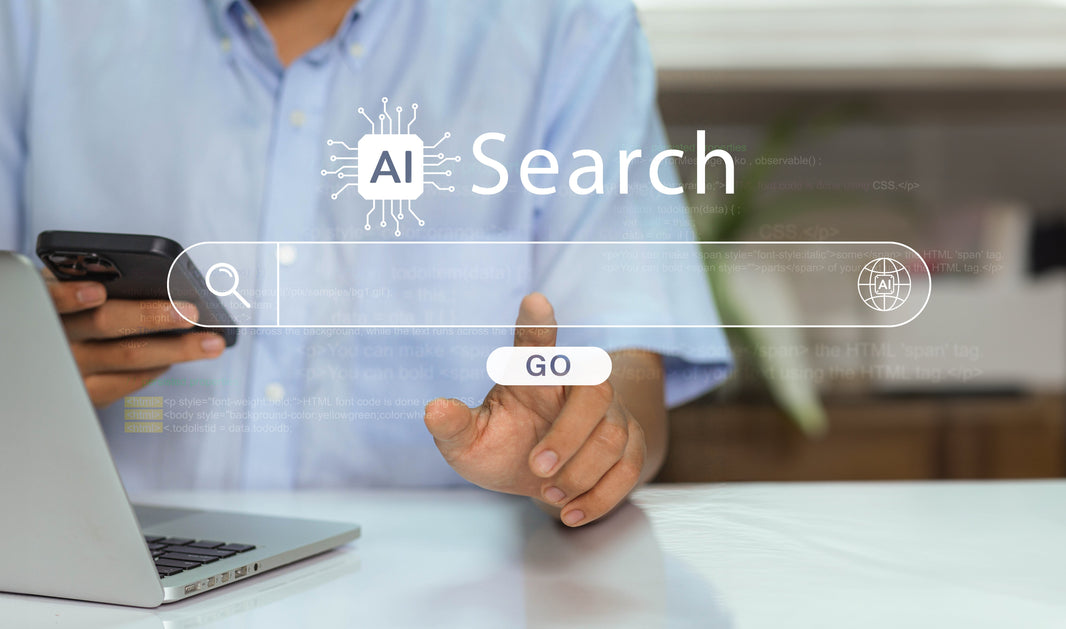Running an e-commerce business is thrilling until sales stall.
You invest in ads, build a presence across every platform, and see traffic arrive. People browse, even add to cart, but don’t buy. And being an online merchant, you can only watch your hard-earned clicks drift away, unlike a brick-and-mortar shop where you can walk over, answer questions, and flip the script to keep customers from leaving.
In this scenario, guessing why they left rarely works. Hoping they’ll return on their own almost never does. The smartest move is to intervene and revive that halted buying decision while the intent is still warm.
The best and most cost-effective way to revive halted buying intent is to re-engage those very people who browsed, considered, or abandoned their carts and do it before they disappear for good.
This is exactly what retargeting ads do: lower your cost per acquisition, and reclaim 30–40% of sales that would otherwise vanish.
Retargeting vs Remarketing vs Prospecting
First, let’s clear the possible confusion between retargeting vs prospecting ads.
-
Prospecting or cold ads introduce your brand to cold/ new audiences, like people who’ve never seen you before. They are great for visibility and growth, but typically expensive per sale.
- Retargeting reconnects with people who have already engaged, like site visitors, product viewers, cart abandoners, and past buyers. Conversion rates for these ads are higher, and costs are lower because familiarity is already there.
- Remarketing traditionally refers to email-based follow-ups — for example, sending a cart-abandonment email or a win-back message to a past buyer.
Knowing these distinctions helps when planning campaigns: Use retargeting for paid ads and remarketing for owned channels like email or SMS. Together, they create a powerful recovery system.
Why Retargeting Works
For most e-commerce websites, 70%–90% of first-time visitors never buy. And it’s easy to spiral into wild guesses. Maybe the price is wrong. Maybe the creative missed. Maybe the competition is stealing attention.
Each theory adds another layer of anxiety and rarely leads to clarity.
Amidst all this confusion, the shoppers you worked so hard to attract drift away, their interest cools down by the hour.
Now, let’s quickly address the main reason why retargeting ads are not a choice; it's a necessity.
Only a few shoppers buy at first sight; however, that does not mean the other won’t buy from you at all. As per the common shopping norms, your customers tend to first compare prices, weigh trust, hesitate over shipping, or simply get distracted.
And in the meantime, your competitors are also trying to get them with smarter ads and follow-up that will quietly reclaim your potential traffic.
However, this won’t happen with the right retargeting strategy in place from the get-go. You can bring many of those visitors back at a fraction of the cost of acquiring brand-new traffic.
Retargeting ads reintroduce your brand to those customers who are already interested in your products. The key is knowing how to set them up strategically, not just turn them on and hope.
This guide will walk you through everything — from understanding retargeting psychology to building high-performing campaigns across platforms.
What Retargeting Means in Digital Marketing
In digital marketing, retargeting is the practice of showing ads specifically to people who have already interacted with your brand online. It’s built on behavioral signals: site visits, product views, cart additions, video views, or other engagement.
Instead of advertising to strangers and hoping they’re interested, retargeting focuses on those who’ve shown real intent. This precision is why it’s considered one of the most cost-effective and ROI-friendly tactics in the digital marketer’s toolkit.
Essentials for High-Impact Retargeting Campaigns
Segment Your Audiences
Retargeting is not about being more louder; it’s about speaking intelligently to someone who’s already listening. It’s cost-efficient because you’re not paying to introduce your brand — you’re reigniting interest that already existed.
The reason it is cost-effective is that you are not persuading strangers; you are re-engaging people who have seen your product and considered it.
Because of this familiarity, retargeting ads routinely outperform cold campaigns in click-through rate and conversion while costing less per acquisition.
First, build a case for your retargeting ad. Not every visitor deserves the same message. Someone who glanced at a product page is different from someone who abandoned a full cart. Past buyers require yet another approach.
Segment audiences by behavior: product viewers, cart abandoners, returning customers, and casual content readers. Doing so allows you to craft messages that match intent. Generic ads feel wasteful; tailored ones feel personal and persuasive.
Choose Channels Strategically
After segmentation comes placement.
Facebook and Instagram excel for visually rich consumer products and allow dynamic product ads that show shoppers the exact items they viewed. Google’s Display Network keeps your brand visible as users read articles or browse forums. YouTube works well for products that benefit from storytelling or demonstration.
TikTok and Pinterest thrive where inspiration drives impulse, especially in fashion and lifestyle categories. Start with the channel where your traffic is already strongest, then expand once the first campaigns prove profitable.
Create Ads That Convert
Targeting alone does not close sales; creative execution does.
A casual browser may need reassurance about quality and brand credibility. A cart abandoner often responds to urgency, small incentives, or clear shipping information. Past buyers appreciate exclusivity and early access.
Dynamic content elevates this work by showing each shopper the precise item they considered. Add social proof — ratings, testimonials, user photos — to reduce hesitation. Rotate creative angles: one ad focused on craftsmanship, another on lifestyle fit, another on timely savings. Frequent refresh keeps audiences engaged and prevents fatigue.
Time and Pace Your Ads
Even the best ad fails if shown too late or too often. Cart abandonment is tackled best within 24 hours while the decision is fresh. Product viewers remain receptive for one to three weeks but rarely longer. Past buyers require patience until a genuine new offer appears.
Control frequency carefully. Seeing your ad several times a day can persuade; seeing it dozens of times irritates. Use impression caps and exclude people once they convert. Respectful pacing protects your brand image and keeps costs efficient.
Budget Intelligently
Retargeting rarely needs massive spend. Many brands begin with modest daily budgets for each audience and scale once return on ad spend proves healthy. High-intent groups, such as cart abandoners, often justify more aggressive bidding because their conversion cost is low.
Automated bidding tools like “Lowest Cost” on Facebook or “Target CPA” on Google — work well once data accumulates. A practical guideline is to dedicate 10–20% of your total ad budget to retargeting. Done well, that fraction can generate 30–40% of sales.
Measure and Refine
Retargeting thrives on data. Install tracking pixels to know who viewed, who added to cart, and who purchased. Monitor click-through rate for creative relevance, cost per acquisition for efficiency, and return on ad spend for profitability.
Test constantly. Experiment with different creative angles, incentive levels, and timing windows. Refresh visuals every month or whenever performance drops for maintenance purpose. Small, steady optimizations often drive dramatic ROI gains over time.
Integrate With Other Tactics
Ads alone recover many sales, but integration makes them stronger. Abandoned-cart emails and SMS reminders work well when timed alongside retargeting impressions.
Loyalty programs encourage repeat purchases and referrals. Dynamic discount codes create urgency tailored to each shopper. Once retargeting is profitable, lookalike audiences can expand reach to people who resemble your best customers.
This orchestration — ads plus email, SMS, and loyalty builds a seamless recovery system rather than a single, isolated campaign.
Avoid Common Pitfalls
Several mistakes drain retargeting budgets. Treating all visitors identically weakens relevance. Continuing to advertise to customers who already bought wastes spend and irritates them. Allowing the same creative to run for months creates banner blindness. Flooding prospects with excessive impressions breeds annoyance instead of trust.
Awareness of these traps and disciplined campaign settings to avoid them keeps retargeting both efficient and brand-safe.
Key Insights:
- Retargeting efficiently converts visitors who have already shown intent, making each recovered sale cheaper than acquiring new customers.
- Segment audiences by behavior, like product viewers, cart abandoners, past buyers, and casual site readers, for more relevant messaging.
- Begin on the channel where your audience already engages most (such as Facebook/Instagram, Google Display, or YouTube) before expanding to others.
- Match creative to intent: reassurance for browsers, urgency or incentives for cart abandoners, exclusivity for loyal buyers, and always include social proof.
- Retarget promptly after a visit or cart abandonment, keep campaign windows short, and cap impressions to avoid fatigue and wasted spend.
- Allocate about 10–20% of your ad budget to retargeting; well-run campaigns can return 30–40% of overall sales.
- Track performance closely with pixels, watch ROAS and CPA, and refresh ads regularly; treat retargeting as an iterative process.
- Combine retargeting with email, SMS, and loyalty programs to create a seamless recovery and retention system.
- Avoid overexposing users, serving outdated creatives, or targeting people who have already purchased.
- Retargeting maximizes the value of traffic you have already paid for, turning lost attention into profitable conversions.
Web Ecommerce Pros Can Help You
With over 20 years of experience in the ecommerce space and a diverse portfolio of successful brands, we understand exactly what makes online shoppers convert.
More often than not, it’s not your product that’s the problem; it’s the ad strategy. A weak or misaligned retargeting approach can easily lose potential customers who were too close to buying.
Spotting and fixing these gaps can be tricky, especially for new merchants. So, if you’ve already tried every trick in the book, reach out to us and let our expertise do its work. We’ll refine your retargeting campaigns, re-engage lost visitors, and help your store reach new heights of success.









